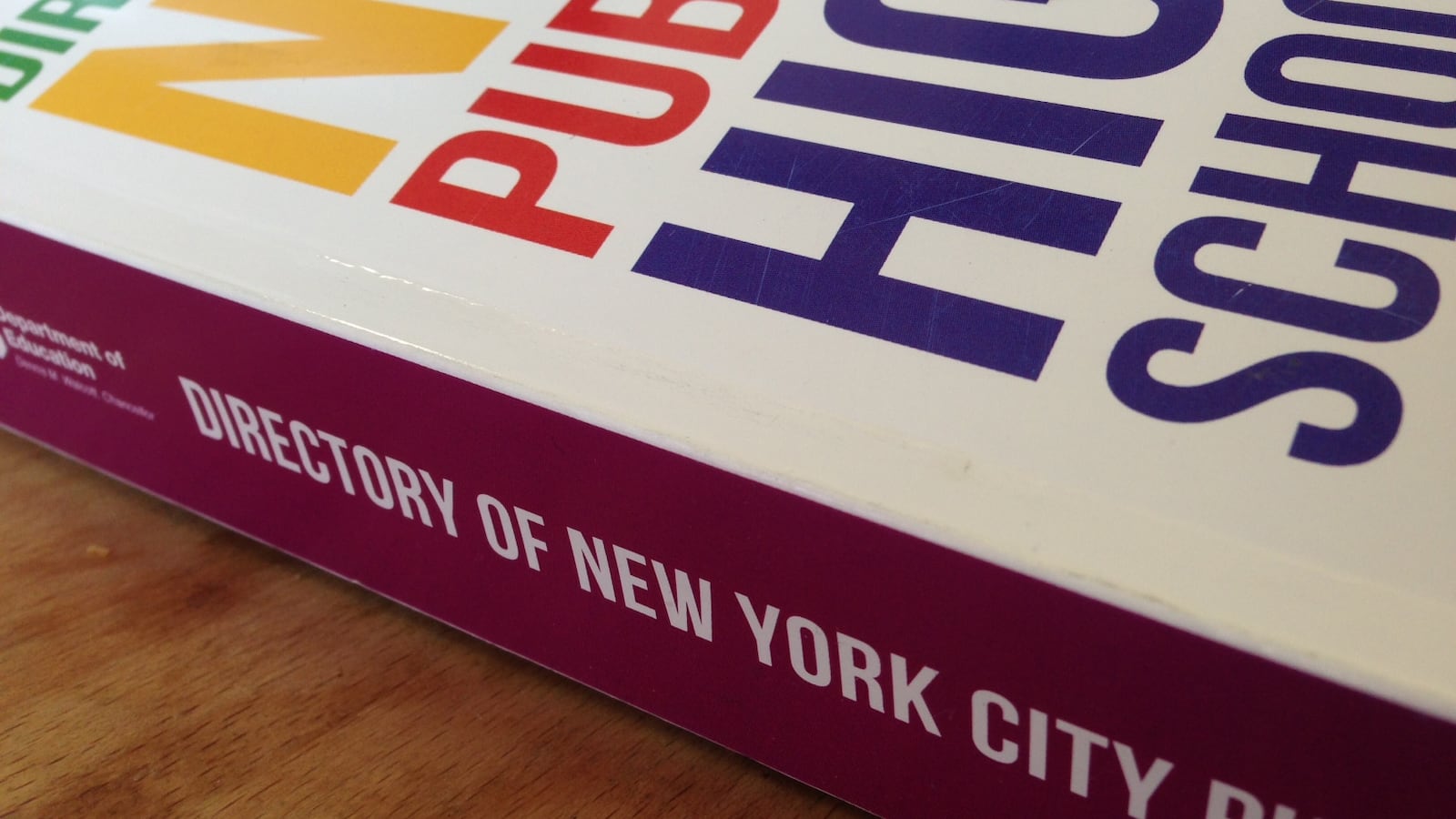Applying to high school in New York City can often feel daunting for parents and students — and also for the school counselors who shepherd the process, a new report shows.
Researchers who interviewed 88 educators tasked with helping students navigate high school admissions found that many of them mistrust the system and question whether it’s fair, according to an October study in Educational Policy, an academic journal.
Carolyn Sattin-Bajaj, an associate professor at Seton Hall University who co-authored the report, said the city should consider the experiences of counselors to make the process smoother and improve outcomes.
“They see the human toll — and the possibilities,” she said. “They see the kids struggling to identify schools or understanding the eligibility requirements … And then see them matched to schools they’re excited about, or not excited about, or that are two hours away.”
In New York City, students aren’t assigned to their local high school but must apply to schools, ranking a dozen choices from more than 700 programs. In theory, this system opens up opportunities to attend high-performing schools regardless of a student’s ZIP code.
Counselors largely “had positive things to say about the idea that kids could choose schools,” Sattin-Bajaj said. “It was more about in practice that there was a problem.”
Hurdles, counselors noted, include geographic preferences that shut students out of some of the most coveted schools. Some schools in Manhattan’s high-performing District 2, for example, give admissions priority to students who live within the affluent district’s boundaries. Every year, schools like Eleanor Roosevelt on the Upper East Side fill up exclusively with students who live or attended middle school in the area.
Many other sought-after options screen students based on academic performance, and have their own admissions criteria, such as an interview or a test. Keeping track of all the requirements can be another hurdle, especially for families who speak a language other than English, counselors said.
Students with disabilities also face specific challenges in the process. The study noted, “Multiple counselors decried the common practice of high schools attempting to dissuade admitted students from enrolling because their individualized education plans (IEPs) might require costly supports or services that they were legally mandated to offer but did not.”
The process is sometimes complicated by the high schools themselves, which may not provide up-to-date information about their offerings or may ignore requests for more information about their admissions criteria, according to counselors. Some of them said they wanted the education department to adopt more active oversight to make sure schools don’t violate city rules regarding admissions.
With high-performing students largely enrolled in the same select group of schools, counselors also reported there were fewer options for students who hadn’t scored top grades in middle school.
“The under-supply of high-performing high schools accessible to students of all achievement levels, particularly in parts of the city accessible to the most economically disadvantaged students, led many counselors to question the equity rationale for school choice,” the study found.
There have been some major changes in the process since the interviews were conducted in 2015. The city eliminated the limited unscreened admissions method, which didn’t have academic requirements but gave preference to students who show interest in a school by, for example, showing up for an open house. But making time for school visits during the workday could be a burden for some families, and information about tour dates and times was often hard to find.
The education department has also moved to an online application system, which could distance counselors from the application process. Previously, counselors had to submit students’ choices — an administrative load but one that encouraged student interaction throughout the high school application process.
Many integration advocates argue the extent of academic screening in high schools, and the labor-intensive application process, helps drive New York City’s status as one of the most segregated school systems in the country.
A spokeswoman for the education department, Miranda Barbot, highlighted the city’s training offerings for counselors and emphasized that information on applying to high schools is available in 10 different languages.
“School counselors make a difference for students and families every day by helping them navigate the high school admissions process, and we are committed to supporting this work through ongoing training and resources,” she said.
A task force appointed by Mayor Bill de Blasio recently recommended ending the use of admissions criteria, such as attendance, and eliminating geographic priorities as ways to encourage more student diversity.
It is up to the mayor and Schools Chancellor Richard Carranza to respond to the recommendations, which aren’t binding and are sure to draw backlash from families who say the current system rewards student merit.

